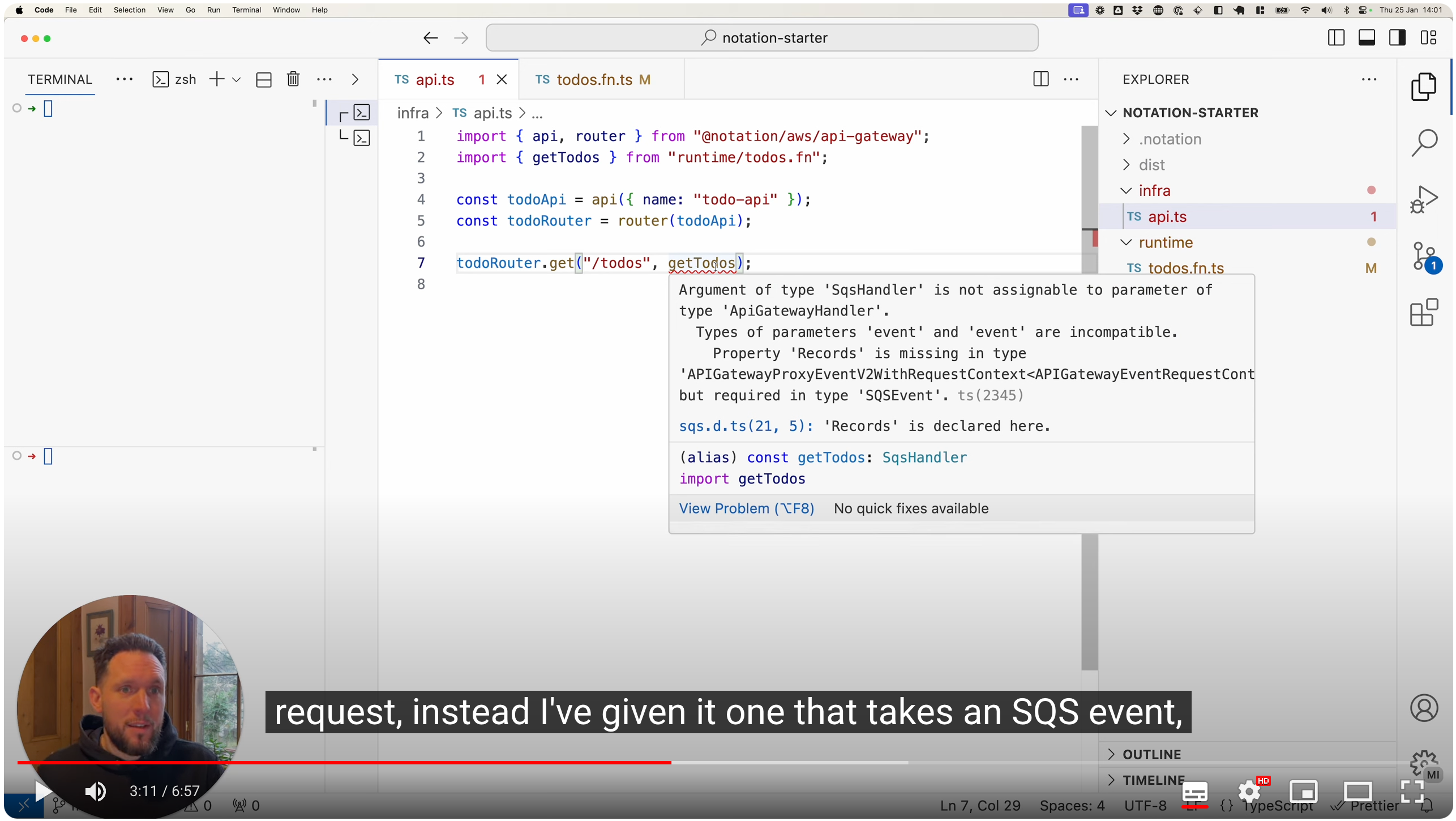Notation
Notation is an experimental framework that makes it easy to develop and deploy serverless applications.
It is ideal for small, agile teams who are building software that needs to quickly scale up and down, but don't have time to spend wrestling cloud platforms.
Demo

Features
1/ Infrastructure Compiler
Write intuitive code that represents your application, and let Notation infer
the necessary infrastructure setup.
2/ Hot Module Swapping
Quickly spin up dev stacks on
production infrastrucutre, and watch your infrastructure update while you
code.
3/ End-to-End Types
Catch errors before you deploy to production.
Notation ensures that your runtime code and infrastructure are compatible.
Why?
We believe that infrastructure bureaucracy such as setting up CIDR groups, defining IAM policies and forming ARN strings – although good to be aware of – are often proprietary implementation details that should be calculated by developer tools, and not manually configured by developers.
Infrastructure-as-code tools tend to map directly to the cloud platforms' complex models of operation. This can consume a lot of developer time, exposing them to concerns that are unrelated to their acutal application.
How?
Notation works by modelling serverless infrastructure in an application-like framework. This makes Notation apps intuitive to write: rather than thinking about how cloud platforms should be configured, you instead think about what you want your application to do.
Status
Notation is currently in an early stage of development, and we advise against using it for production applications. We are actively working on documentation and new features, and encourage community involvement for feedback and suggestions.